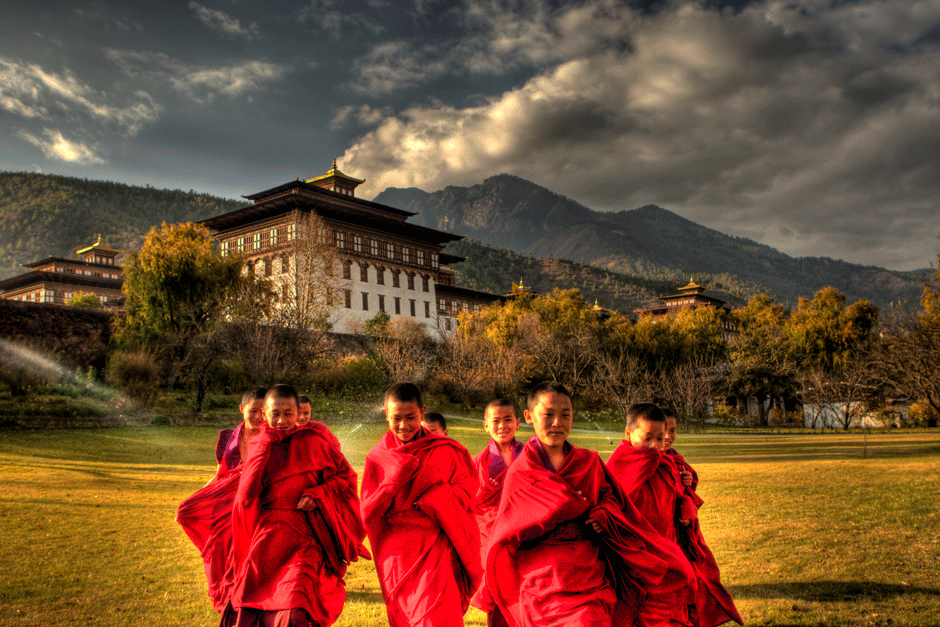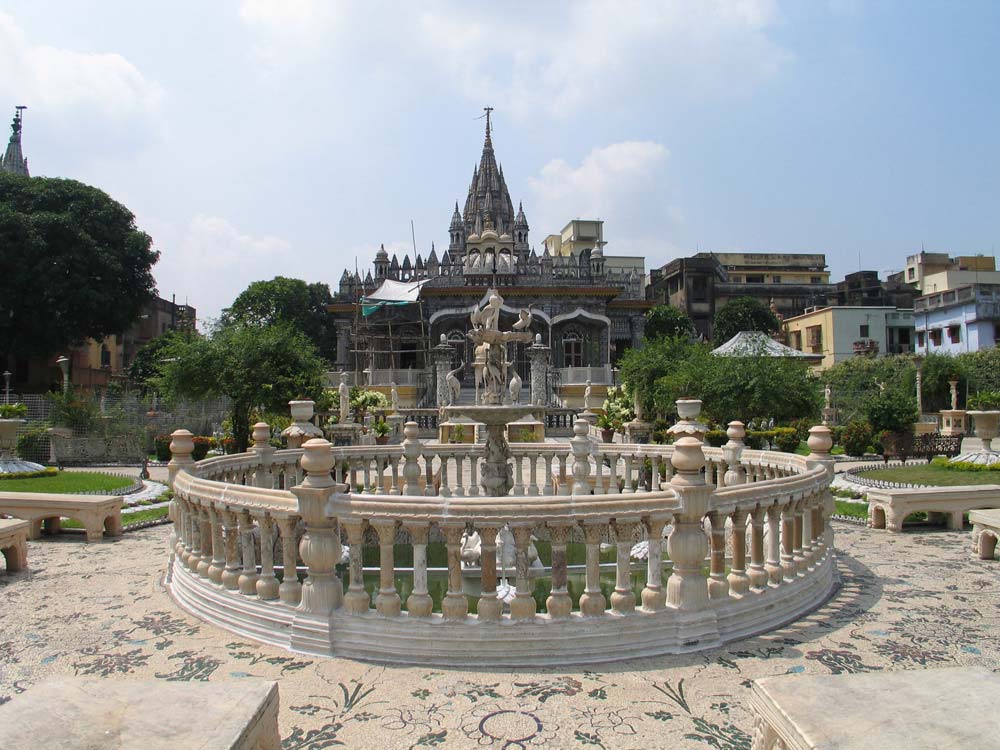Where am I : India Tour Packages » Most Popular Packages » Phuentsholling Tour Packages
Phuentsholling Tourism
If you are tired and tired of the same routine or the heat has started bothering you, it is time to pack your bags and go on a trip. Now you do n... Phuentsholling presents itself as the second-largest city in Bhutan, both in terms of population and development. It is located in the district of Chukha, in the southwest of the country, on the border with India near Jaigaon. This border town can thus serve as an entry and exit point for tourists traveling to Bhutan. Discover a beautiful ethnic diversity between Nepalese, Indians, and Bhutanese. On the edge of a mountain range, where the great phalanx of Himalayan peaks begins to rise against the Indian border, thriving little Phuentsholling is one of Bhutan's most developed cities. Made rich thanks to easy access and close connection to the city of Jaigaon in West Bengal, this place was a center of commerce and sales. The market cultivates the centerpiece, while there's a distinctly built character in the appearance of the place. It is also a great place to see India's border gates and the casual patrols that are common there.
Let's start our Phuentsholling Tourism now!
About Phuentsholling
Phuentsholling stands out as the commercial center of the country. The city exposes you to a mix of several ethnic groups from India, Bhutan, and Nepal. The city takes place on the foothills of the Himalayas in the plain of Dwar. It extends over 15 km wide and stretches along the border of the subcontinent, on the part of the Ganges at the level of Bengal. It is bordered to the west by the Torsa River, which flows to India. Dedicated to cross-border trade, the city is proving to be very dynamic. It hosts the headquarters of the National Bank of Bhutan and serves as a liaison between several South Asian countries. Rising in the background like a significant barrier, the Himalayas dominate the landscape at Phuentsholling. The city is also a base camp for hikers who want to venture into the mountains, contributing to tourism development and the city itself. In terms of architecture, modern buildings are gradually gaining ground. Phuentsholling has many hotels and administrative offices, which does not prevent preserving the natural environment, cleanliness, and safety.
Some Interesting Facts about Bhutan
Bhutan is rich in precious culture and diversity. There are so many celebrations that take place here from time to time. Each town in this country has its celebration, and one of the best known is the annual Tshechu, a very religious festival in this place. At Tshechu, people dress in colorful clothes and join the nearest monastery or temple. This celebration is usually done to pray to the second Buddha, Guru Rinpoche. People gather to enjoy their traditional dance, sharing meals including red rice, spicy pork, ema datshi, and momos, usually made with pork or beef. They also drink the traditional rice wine known as Ara. This is the celebration where families get together and catch up with everyone.
- A country that has no traffic lights - and traffic is regulated by free circulation traffic circles. A traffic light was rejected as it restricts the natural flow of life. Since there is less volume of traffic, it sure is manageable for now.
- Newspapers on a Sunday - Bhutan is a nation with no sense of urgency. Something that brings 'Happiness,' I suppose. So much so that there are no printed newspapers on a Sunday or they don't want to read it either. Isn't that great?
- Make your stamps - Bhutan has some of the most intricately designed stamps in the world. New stamps are often released in various colors and shapes (even 3D) to celebrate festivals, anniversaries, and even the royal family's weddings. And you can join the cultural tradition by making your stamp at the National Post Office in the country's capital, Thimphu.
- No desserts, lots of spicy - it may be that it is the only country in the world where Chili is the vegetarian favorite, and there is nothing called a dessert on their daily menu. And, of course, tea with salt is trendy. Spicy country, huh!
Seventy-two percent of Bhutan's land is covered by forest. And it will continue like this. This commitment to maintaining a large forest area has allowed the development of rich biodiversity.
Phuentsholling counts some natural sites and historical places among its attractions, such as the Kharbandi Gompa. This monastery, built-in 1967, preserves several paintings from the life of Buddha, as well as statues of Shubdrung Nawang Namgyal and Guru Rinpoche. Also, visit Zangdopelri Temple, located in the city center, which was the former home of Guru Rinpoche. On the temple's ground floor, find statues of Rinpoche with his eight manifestations. The walls are covered with frescoes relating to the life of the Buddha. Discover representations of the eight Bodhisattvas, Avalokiteshwara, and Shubdrung Nawang Namgyal on the second floor. The top floor houses a gigantic statue of Amitabha Buddha.
Places to visit in Phuentsholling
The gate of the thunderous dragon land, Phuentsholling, is often considered the residence of the kings and queens of the Himalayan Kingdom. Time moves slowly here, and the simplicity of the inhabitants completes the serenity of nature. At an altitude of just 300 meters, Bhutan's commercial center is next to the Indian city of Jaigaon in the foothills of the Himalayas. There are several places to visit in Phuentsholling where you can catch a glimpse of the cultural diversity of Bhutan, Nepal, and India. The border city serving as a corridor to Sikkim, West Bengal, and Assam is worth visiting when exploring Bhutan. Here are ten places to visit in Phuentsholling:
Tiger's Nest
It is the most famous monastery in Bhutan. And unquestionably one of the most important places of pilgrimage in the Himalayas. About 5 km from Kyichu Lhakhang, you will see to the right of the road, overlooking the valley, the hermitage of Taktsang, "the Tiger's Nest," perched at an altitude of 3,070 m. As if suspended in the air, the temple is clinging to the black rocks. After long years of reconstruction, due to a devastating fire in 1998, the temple is again open to the public.
View of Peeple Drangra or Phuntsholing
Another place to visit in Phuentsholling, Bhutan, is the view of Peeple Drangra or Phuntsholing, which is located at an altitude almost equal to Rembanan Goemba. Best visited during the day, on clear days, you will get a clear view of the thriving city of Phuentsholling as well as the plains of Bengal. The gradient of the hills and the Torsa River that flows next to it create the perfect preparation for photography.
Check out the Charm of Zangto Pelri Park
After visiting Zangto Pelri Lhakhang and circling the prayer wheel, check out Zangto Pelri Park next to it. One of the kid-friendly places to visit is Phuentsholling, Bhutan, where you will find people from all walks of life. The saints perform prayers, tourists take a walk, drink coffee or read a book, lovers enjoy a date, and children gather around a prayer wheel, a small pool, and a large ball fountain.
Religious Spirit in Zangto Pelri Lhakhang
For those looking for a religious spirit or watching Buddhist monks chanting praises in the early morning, Zangto or Zangdo Pelri Lhakhang is among the best places to visit in Phuentsholling. Downstairs, there is a replica of Master Rinpoche, along with eight different ones that are manifested as idols and paintings depicting the life of the Buddha. You will also find statues of 8 Bodhisattvas, Avalokiteshvara, Shabdrung Ngawang Namgyal on the 1st floor, and the main idol Amitabha on the top floor.
Gate of Bhutan
One of the most photographed places to visit in Phuentsholling, the Bhutan Gate is the main entrance and exit to and from India. The gate is located next to the Regional Immigration Office, the gate looks gorgeous with its beautiful wooden décor and well-preserved flower beds in the nearby surroundings create a beautiful setting. The entry and exit gates are operated by the Shashastra Seema Balparamilitary team and the Bhutan Police to ensure that the vehicle passes in an orderly manner, without unnecessary reinforcement, which is considered a punishable offense in Bhutan.
Dzong of Punakha
It is of the most beautiful and impressive fortresses in the country. Built in 1637, by the Shabdrung Ngawang Namgyal, at the confluence of two rivers, the Pho Chu and the Mo Chu, the dzong of Punakha constituted for a long time the borough all by itself. Damaged several times by fires and earthquakes, the dzong has been rebuilt many times, as has the suspension bridge that connects it to the village. A flight of very steep steps leads under its porch. On its walls were painted the guardians of the four directions, the symbol of the Kalachakra, and a poem dedicated to Shabdung. In the first courtyard, a considerable chörten was built next to a magnificent pipal, the tree under which the Buddha attained Enlightenment. Behind the central tower, two other courses follow one another. Last, a temple contains the relics of the Shabdung, who died in this dzong. We then reach the famous hall of 100 pillars whose walls are decorated with frescoes representing the life of Buddha. Majestic, three substantial golden statues of Buddha, Guru Rinpoche, and Shabdrung date from the 18th century. Occupying a strategic site that dominates the three valleys, the dzong would have been built by order of Shabdung, following a premonitory dream. This dzong is the only one to have kept its shingle roofs, and the second courtyard that of the monks, is very narrow and connects the first by a bridge which gives it its character of a fortified castle.
Reptiles Breeding Center
Amo Chhu Crocodile Breeding Center is among the top places to visit in Phuentsholling. Definitely on your wish list, especially if you want to see an afternoon feeding session. Some ponds are there, some filled with fish. In addition to the pond, you can see endangered gharials, crocodiles, migratory birds, turtles, and fish in the water. Officials will tell you about their conservation projects and the food used by the reptiles.
Shopping in Phuentsholling
For crazy shops, one of the best places to visit near Phuentsholling is Phuentsholling Market which is located quite far from the main town of Phuentsholling. If you don't buy expensive or precious bronze and copper home decor from the primary market, please visit this market which sells essential items like food items - cooked and uncooked. Interact with local vendors, buy seasonal vegetables and fruits, and be captivated by herbal foods.
Phuentsholling Park
It is one of the popular places to visit in Phuentsholling, Bhutan, with your children or spouse. The garden has many eucalypti and leafy sal trees that offer many colors as a relaxing getaway for a quick visit with friends and family. There are several pavilions for relaxation and basketball courts that are popular for both Bhutanese and Indian tourists. Outdoor gym equipment will be great for fitness enthusiasts, while diners can enjoy tea, snacks, and steaming momo from the food stalls.
How to get there?
To reach Phuentsholling, you can take the Sikkim road. From Darjeeling and Bagdogra Airport in West Bengal, allow between 3 and 6 hours to reach the city. From Thimphu or Paro, Phuentsholling can be reached in 5 or 6 hours by road.
By bus:
There are two routes to get to Phuentsholling. The first pass through Sevak Bridge, the other through Alipurduar and Hasimara. Buses depart from Siliguri Bus Station daily at 7:30 a.m. and 1:30 p.m. Tickets are available at the station.
By train:
The nearest train station to Phuentsholling is at Hasimara, about 30 minutes by bus.
Apart from Jalpaiguri, Alipurduar station is also an excellent alternative to finding a train to Jaigaon. The town of Phuentsholling is about 60 km, or 1 hour and 15 minutes, from Jaigaon.
When to go? All about the climate of Bhutan
Bhutan can be visited in any season, although you must choose your destination according to your departure period. Thus, to have good visibility of the mountains, it is best to go there during the dry season, from November to April. Bhutan generally varies considerably according to its regions, given its significant variations in altitude.
There is thus a subtropical climate in the great plains of the south with hot and humid summers and relatively mild winters, around 15°C. In the country's north, we experience a rather difficult alpine climate, especially towards the highest peaks, which are constantly under snow. In other words, you only go there after intense training!
- January: Like the western valley, the localities in this area are pretty cold in January with an average of 5°C but plenty of sunshine on the other hand. In this region, you are strongly advised to take the road between Phuentsholling and Thimphu, passing from tropical vegetation to conifers in a single route, all enveloped in a sheet of fog, giving the place an almost mystical note!
- February: We gain a few degrees in the western and eastern valleys, and the sun does not budge. Well covered, you can wander through the capital's alleys, especially in Norzim Lam, to stock up on souvenirs in the stalls containing fabrics, books, mystical masks, and other objects of all kinds.
- March: The rains are pretty moderate in the territory but appear on certain days. The valleys, in turn, are around 8/10°C, announcing the beginnings of the hot season.
- April: The western valleys are a little ahead of their western neighbors. As the humidity becomes high, visibility at the summit is a little worse than in the previous month. Trekking is recommended during this period because the mountains are covered with flowering rhododendrons. But rain gear will be essential.
- May: The valleys are close to spring temperatures with 13 and 15°C on average. However, with the approach of the wet season, the rains gain ground almost everywhere on the territory, particularly in the south, subject to a subtropical climate. In general, the days oscillate between precipitation and clearings. A raincoat when visiting will therefore be imperative.
- June: Whatever your location, the rains are predominant in June. Especially since the monsoon clouds can sometimes generate cancellations at Paro airport, and the roads are sometimes flooded.
- July: In the heart of the monsoon, the month of July is stormy and cloudy, especially in the south, hot and humid, which is really of no interest at this time. Be aware that July has the highest rain rate in the entire Himalayas. Prefer the end of the rainy season towards the end of September to start your trip.
- August: The rains drop by one iota in August but remain heavy enough to hinder your visits because they occur almost daily and in full force.
- September: The first half of September is still quite rainy, the last weeks give way to a pretty blue sky, and several significant holidays coincide with the arrival of this improvement. In the capital, we celebrate Tsechu, four days of intense dances that bring joy to the country.
- October: This is the best month to visit Bhutan because the mildness characterizes the country and the mountains stand out clearly. It is, therefore, an ideal month for climbing the peaks.
- November: Plan the necessary in the valleys of the west because the zone cools down, dropping to 10°C on average. If you are in Mongar, in the center of the country, know that the tsechu festival is organized there at this time. This festivity is smaller and less frequented by tourists than the others in the country.
- December: As winter has dug its nest, it is sometimes accompanied by snowfall at high altitudes, and the passes in the eastern and western areas can sometimes be blocked for this purpose. Plan to cover yourself in the eastern and western valleys while you will enjoy mild and pleasant weather in the south.
Final Thoughts
Have you ever experienced the silence of a country - when the only sounds you think of are prayer flags, the cries of birds, the chimes of prayer bells, and the calming calm of the water? Silence is so intense that you lower your voice even though you are gasping at the incredible beauty of the land. Endless green valley bounded by black hills and exposed only by the colors of flowers. This may sound like a story. But we found this Phuentsholling in central Bhutan. Phuentsholling tourism is the best choice if you are planning to travel to Bhutan.
Speak to our Experts!
Instant Quote, Best Deals - 100% Customizable, Includes hotels + car + guides Cost depends on various factors like, number of people you are, travel dates, category of hotel and transportation etc.Drop your Inquiry to get the best deals as per your requirements. 100% Satisfaction Guaranteed. Rated 5* in TripAdvisor.





